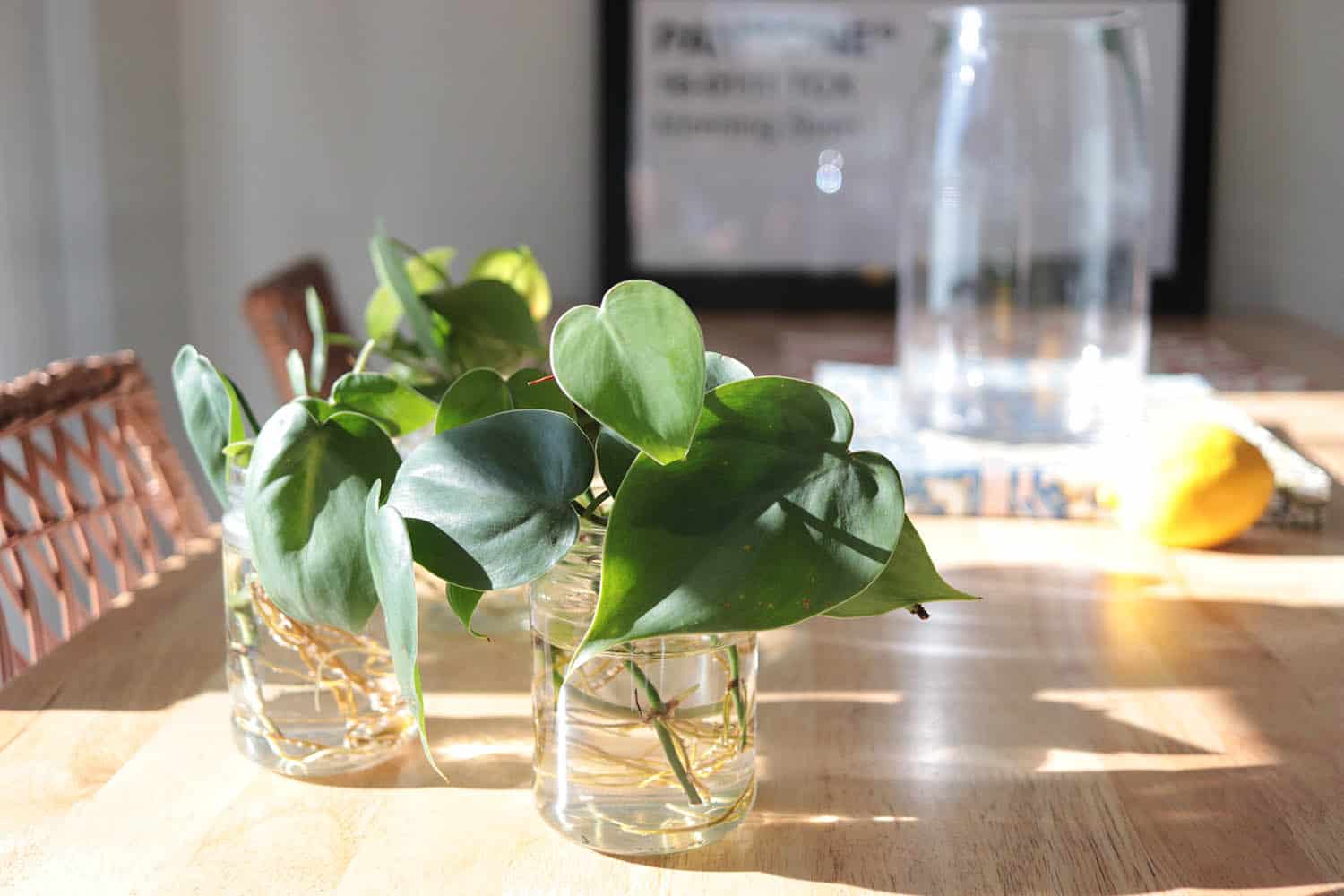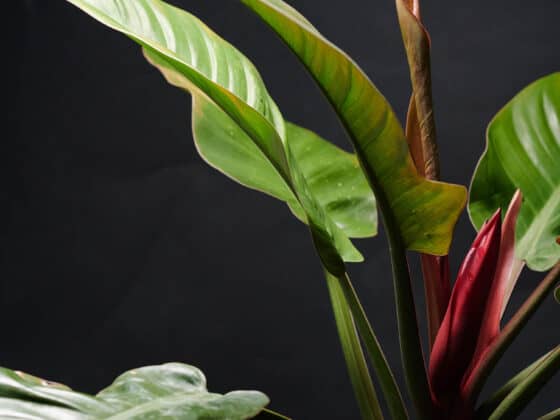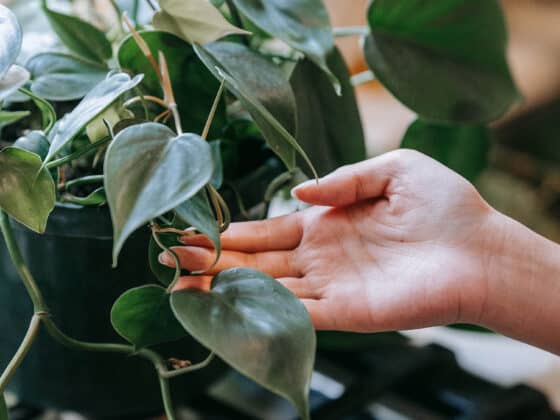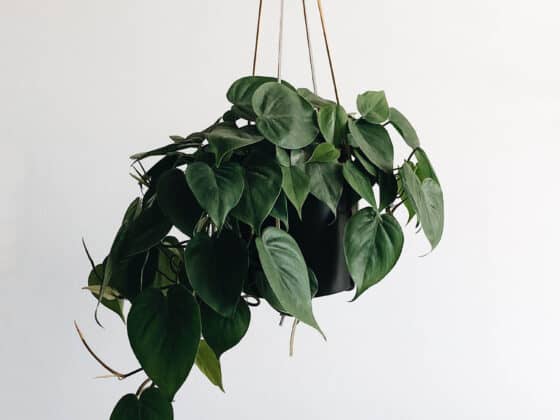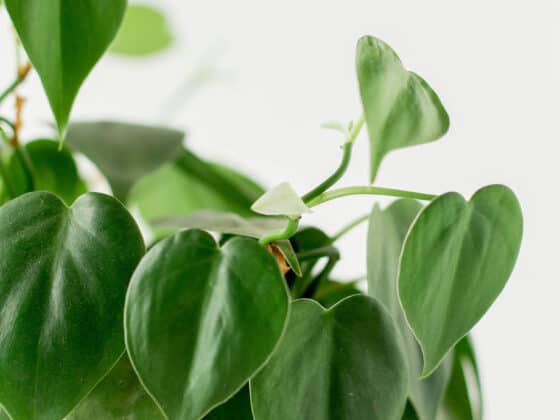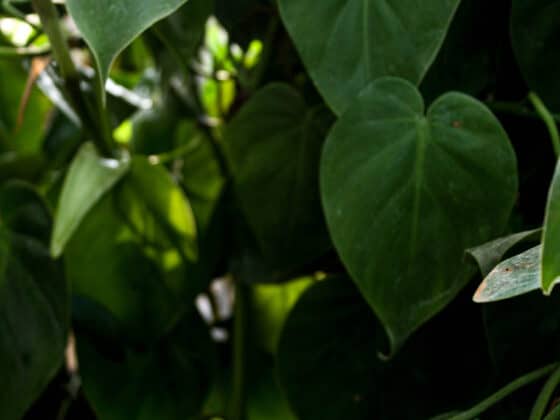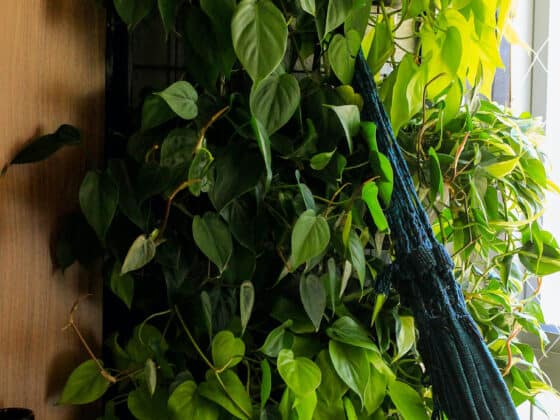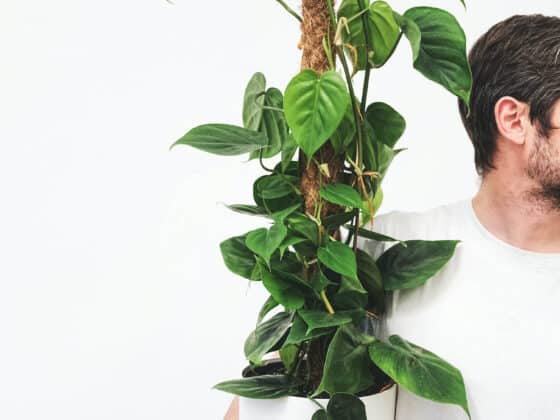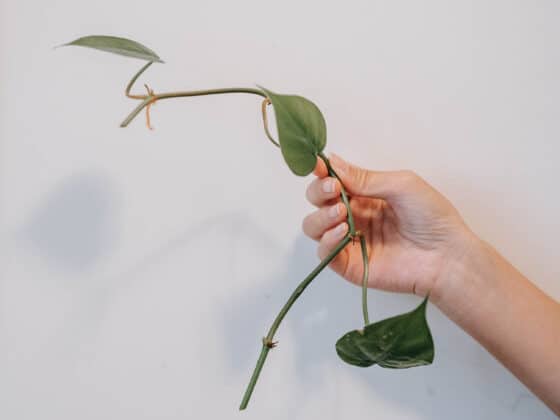We all know that Philodendrons are pretty hardy houseplants that have a reputation for being low-maintenance and easy to care for, and honestly, that’s one of their best selling points. However, did you know that these plants are versatile enough to grow in just water, without soil?
Many varieties of Philodendron can be easily grown in water, without the need for soil. You must be diligent about keeping the water fresh and fertilizing regularly for your plant to thrive, but once established, your plant can live this way for many years. An alternative soilless growth method is to use a LECA substrate.
For as much as I drone on about the importance of good soil structure and proper drainage in all my articles, it might seem like I’m contradicting myself here, but some plants are pretty amazing and can adapt to extreme conditions to survive.
While soil planting is, by far, the most common way to raise plants, hydroponics and semi-hydroponic techniques have come a long way, making these methods more accessible to houseplant enthusiasts of all skill levels.
Let’s go through what this means for Philodendrons, specifically, and talk about how you can successfully grow these types of plants without soil.
Does a Philodendron Need Soil?
Want to hear something a little crazy? In their native habitats, many Philodendrons start their lives as regular vines growing up from the soil, climbing their way up trees to reach towards the sun. At a certain point, once they’re established and secure on these trees, they turn into “secondary hemiepiphytes”, which is a fancy term for transforming into plants that solely grow on other plants, often severing the stem that attached them to their soil-bound root system.
This is actually kind of amazing because they can use their aerial roots to support themselves and still absorb the water and nutrients needed to survive.
I tell you all of that so you understand that the Philodendron houseplants we have in our homes come from these native plants, and also have this same ability to grow without being stuck in the soil.
So, no…it isn’t strictly necessary that your Philodendron is planted in soil to grow and survive. As long as they still have their basic needs met (sunlight, water, nutrients), they will do just fine rooted out in water or a soilless substrate like LECA.
Can a Philodendron Grow in Water?
It is probably not at all surprising that Philodendrons can grow in water. We often propagate new plants in water, taking cuttings from a mother plant and letting them root out over the course of a few weeks.
While most of us transplant newly rooted cuttings into soil at some point, you can just as easily keep them in a container of water and your new plant will continue to grow. Not only will the plant put out new growth, with leaves unfurling as stems elongate, but the root system will also bulk up substantially, often requiring you to transplant your water-bound Philodendron into a bigger vessel.
There are two really important aspects to growing your Philodendron in water.
The first is that you need to make sure your plant always has access to fresh, clean water. Changing the water every 3-4 days will ensure that your plant is growing in a well-oxygenated environment, and you won’t have to worry much about a buildup of mold or algae that often establishes in stagnate water.
Secondly, nutrient availability comes down to you. Because your plant won’t be able to draw nutrients in from any type of soil, you need to provide it with adequate amounts of fertilizer. Luckily, Philodendrons aren’t the heaviest of feeders, so applying a dilute solution of liquid feed about once every 4-6 weeks should be sufficient.
You’ll need to keep an eye on your plant for any signs of nutrient deficiency. If you see any yellowing leaves, you may want to increase the frequency you add your feed solution to the water.
As long as you stay on top of the water changes and fertilizing, and you’ve provided your Philodendron a bright spot to grow, you should see your water-potted plant grow and thrive.
How to Grow Your Philodendron in Water
Even though it’s a pretty straightforward process, there are a few tips and tricks that might help you start one of your Philodendrons out in water.
One important thing to note is that established plants that are grown in either soil or water don’t really like to be transplanted to a different medium, so if you want to grow your Philodendron in water, it is usually best to start with cuttings.
Take cuttings from your mother plant whenever it is large enough or anytime you’re doing a maintenance prune. Remove any of the lower leaves so the only thing submerged in water is the stem. Over a few weeks, any submerged leaf nodes will start to grow roots.
You’ll want to start changing the water every few days (3-4 days is best, but don’t wait longer than a week). Tap water is usually fine to use, but if you find yours is highly chlorinated, or you have particularly hard water, you may want to opt to grow your plants in distilled water.
Place your vessel of rooted cuttings in a location that receives a lot of bright, indirect light. Philodendrons can easily burn in direct sunlight, but love as much ambient light as you can give them, so be sure to prioritize a bright spot for them.
Once your cuttings have several roots that are a few inches long, you can separate them into their own glasses or vases and begin to let them grow individually. Continue changing the water on a regular basis and begin working in applications of fertilizer about once a month.
I like to use a well-rounded liquid fertilizer that I can dilute to half strength and just portion out what is needed for each plant. I add that to the water in the plant’s vessel and give it a few days to absorb what it needs. Then, within the next few days, change out the liquid for fresh water.
As your plants continue to grow, you may notice their root systems expanding in the vessel they are potted in. Make sure you keep an eye on that so you don’t end up in a situation where the plant gets rootbound and you have to break or cut away several roots to remove the plant. Keep potting up your Philodendron into larger vessels as the roots grow.
In time, you just might find that the Philodendrons you have growing in water are doing just as well as what you have potted in soil.
Can Philodendrons Grow Underwater?
Although Philodendrons do quite well potted in water, growing them completely submerged is another story. As much as their interesting leaves and colors would make great additions to your aquarium, Philodendrons cannot be successfully grown underwater.
Although I have seen some compelling YouTube videos of people (very slowly) growing similar plants like Pothos in an aquarium setting, Philodendrons need their leaves above water to survive.
Important respiratory and regulatory functions occur through the leaves of the plant, so when they are cut off from the air, the plant can’t carry out essential tasks like gas exchange, moisture regulation, and nutrient transport.
Their roots can definitely modify to grow well in water, but the leaves do not have the ability to adapt, so if you want your Philodendron to survive, keep the rest of the plant exposed to the air.
Can Philodendrons Grow in LECA?
LECA is an interesting medium that kind of splits the difference between soil planting and water planting. LECA stands for “lightweight expanded clay aggregate” and is, essentially, small balls of clay that have been superheated to a point where they expand and become porous. This allows them to hold onto moisture while still remaining light and airy.
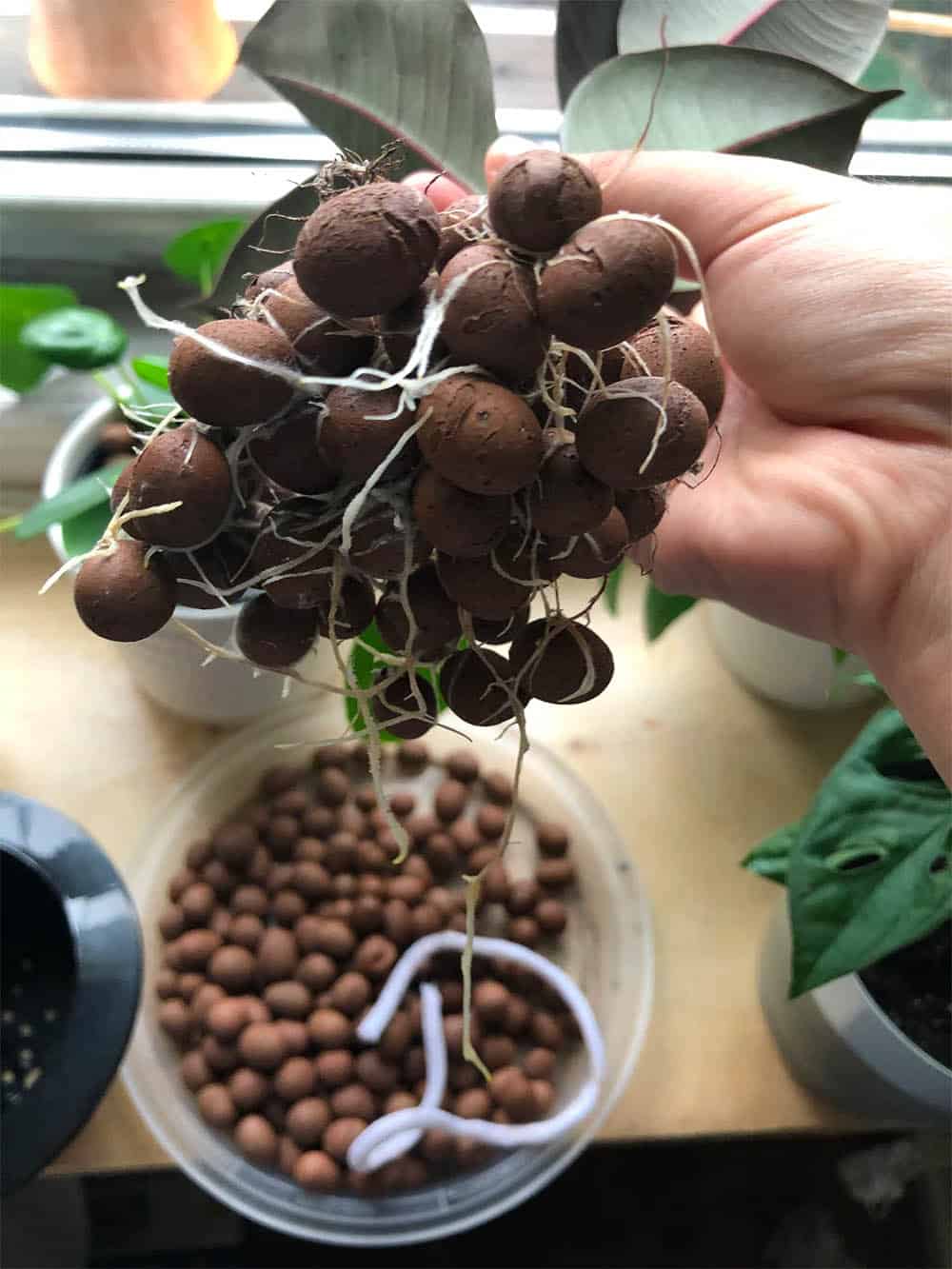
The idea with LECA is that your plant will root down in between all the individual clay balls, which offers the plant support and structure, without the need for traditional potting soil. The container typically has a small reservoir that you can fill with a nutrient-rich water solution. The LECA pebbles will soak up and retain the solution, allowing the plant to absorb the moisture it needs when it needs it, while simultaneously preventing an overly wet environment.
Even though your Philodendron isn’t really planted in soil or water, we now know these plants can grow in both, so the environment LECA creates is actually kind of perfect for it. Because Philodendrons tend to produce hearty root systems, your plant won’t have a difficult time establishing itself in the LECA substrate and absorbing water and nutrients for growth.
However, there are a few things to be aware of. LECA pebbles, on their own, are a sterile substrate, so all the nutrients your plant needs to thrive will come in the form of the feed solution you create.
To do this right, most people opt to purchase liquid hydroponic fertilizing systems that you mix at home. Although pretty straightforward to properly dose, these systems can be a bit overwhelming at first. You also need to test the pH of your prepared solution often so you don’t end up applying something that can harm your plants.
If that sounds daunting, you may want to read the article I wrote all about the pros and cons of LECA here. This article also will give you a list of products you need to purchase to start your LECA setup.
If you are a LECA user already, you can transition any of your Philodendrons into the substrate with relative success. Remember, though, a plant that’s already established in soil may struggle a bit to adapt to its new environment, so if you are afraid it won’t handle it well, you can always propagate new plants and transition the rooted cuttings from water to LECA pretty easily.
Putting It All Together
So, what have we learned? Basically, Philodendrons are totally awesome, adaptable plants that can easily grow in water, without soil. Because of the way they grow and how often you need to prune them, transitioning rooted cuttings to water is a pretty low-risk way to enjoy this substrate-free growing method.
Just keep in mind that you should have a care schedule worked out, knowing you need to change the water frequently, provide proper amounts of fertilizer, and make sure your plant is getting lots of great light.
If you want to venture into the world of LECA, just know Philodendrons are great specimens to grow using this substrate and will do very well once they are established.






